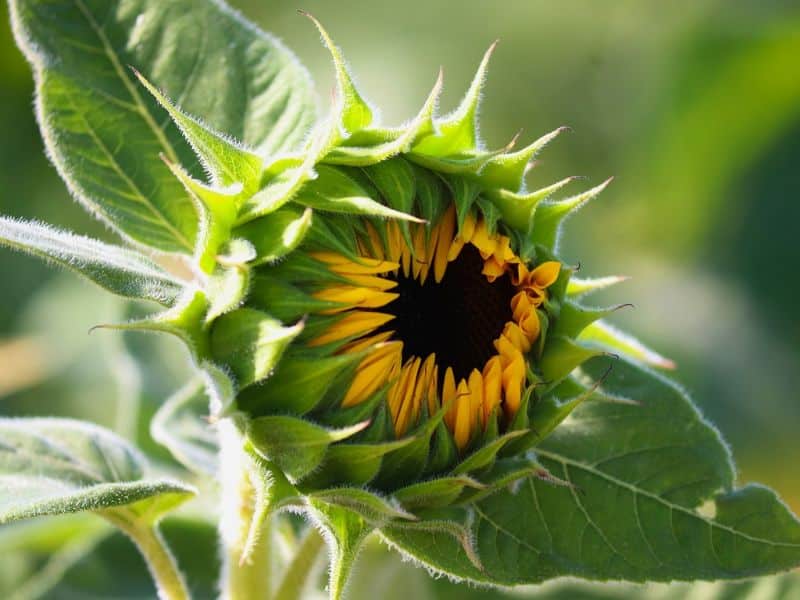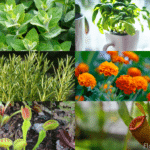You’ve nurtured your sunflowers with love, watching them grow tall and vibrant. But suddenly, you notice something’s off. Their once lush, green leaves are turning yellow.
What could be causing this, and more importantly, how can you fix it? This article aims to shed light on these questions, helping you understand why your sunflower leaves may well be turning yellow and offering solutions to restore them back to health.
Let’s dive in and unlock the secrets to maintaining the radiant beauty of your sunflowers.
Understanding Why Sunflower Leaves Turn Yellow
The Role of Nutrient Deficiencies
Do you know some yellowing of sunflower leaves can be linked to lack of key nutrients? For example, Nitrogen and Magnesium deficiency often results in pale or yellowing leaves (Cherney, J., 2020, Cornell University, College of Agriculture and Life Sciences).
The Impact of Watering Habits
Another contributor: overwatering or underwatering. Too much water forces oxygen out of the soil, creating conditions that favor root diseases, while too little water results in yellowing leaves due to insufficient hydration (Sachdeva, S., 2019, University of Maryland Extension).
Recognizing Disease and Pest Issues
Lastly, it’s essential to check for diseases and pests. Things like fungal diseases, viruses and insect infestations can cause significant discoloration in sunflower leaves (Bradley, C.A, et al., 2018, North Dakota State University Extension Service).
Common Diseases Affecting Sunflower Leaves

Given the diverse entities that may cause sunflower leaves’ yellowing, it’s crucial to understand the prevalent infections. Fungal attacks, along with bacterial and viral culprits, sit high on this list. Let’s explore these in detail.
Fungal Infections Explained
Fungal infections, such as Verticillium and Fusarium Wilt, often leave sunflower leaves discolored. Verticillium wilt, for example, starts manifesting at the plant’s base, spreading upwards, causing leaves to turn yellow, wilt, and die.
Fusarium wilt, conversely, targets the vascular system, restricting the transportation of water and nutrients, leading to yellow and wilted leaves.
Proper diagnosis aids in outlining appropriate treatment methods, including targeted fungicides and good agricultural practices like crop rotation and proper sanitation.
Bacterial and Viral Culprits
Similarly, bacterial and viral diseases also play a substantial role in the yellowing phenomenon. Bacterial leaf spot, as an example, leads to yellow lesions on leaves, while Pseudomonas syringae can cause water-soaked spots turning to yellow.
Viral diseases, such as the Sunflower Chlorotic Mottle Virus or the Tobacco Necrosis Virus, display through unique patterns of chlorosis and mottling. Infected leaves often exhibit irregular, yellow patterns or patches.
Counteractive steps involve eradicating infected plants, using disease-free seeds, employing vector control measures (for viral diseases), and in severe cases, applying antibacterial sprays.
Taking these intricate aspects into account, you’re better equipped to combat the complex issue of yellowing sunflower leaves. The road to maintaining vibrant and healthy sunflowers becomes less daunting.
Managing Pests That Cause Yellowing Leaves

When your sunflowers demonstrate yellow leaves, unwanted pests may be the culprits. This section guides you through identifying these harmful insects and offering both natural and chemical control methods for their management.
Identifying Harmful Insects
Familiarizing yourself with common pests is the first step to manage such invaders. Aphids, thrips, spider mites, and Japanese beetles are chief offenders often responsible for the yellowing of sunflower leaves.
Aphids gravitate towards the undersides of leaves, creating a yellow, distorted appearance, as they excrete a sugary substance called honeydew. This excretion promotes fungal growth, resulting in sooty mold.
Conversely, thrips and spider mites pierce leaf tissues to get at the sap inside. Their invasion often results in mottled, yellow, and drought-like symptoms.
Lastly, Japanese beetles chew sections out of leaves, often leaving a lacy skeleton behind. This type of damage can easily lead to a yellow hue on sunflower leave.
Effective Natural and Chemical Control Methods
Dealing with these tenacious pests requires an integrated approach. A combination of both natural and chemical control methods proves most effective.
For natural remedies, consider introducing ladybugs or lacewings into your garden, as they are natural predators to many of the pests mentioned. Additionally, frequent rinsing of leaves with a sharp spray of water can dislodge aphids and mites.
For chemical control, insecticidal soaps and horticultural oils can effectively disrupt the life cycle of many pests. However, always remember to apply such chemicals late in the day as sunlight can cause compounds to degrade.
By identifying potential pests and applying appropriate control methods, you can steer your sunflower garden away from the dangers of leaf yellowing, ensuring your sunflowers stay vibrant throughout their lifecycle.
Environmental Stressors and Sunflower Health
Navigating the challenges of maintaining sunflower health involves more than just pest management and disease control. Certain environmental factors can stress your sunflowers, leading to yellowing leaves. Let’s delve into two key areas: extreme weather conditions and soil quality.
Effects of Extreme Weather Conditions
Sunflowers, like most plants, thrive in specific conditions. Deviations from these optimal conditions count as environmental stress. Unusual weather patterns are a primary stressor for sunflowers. Sudden frosts, prolonged heatwaves, or excessive rain can lead to your sunflower leaves turning yellow.
For example, sudden temperature drops may damage the plant tissues, disrupting nutrient absorption. Continuous high temperatures, on the will increase the plant’s water demand, leading to drought stress if not adequately met. Excessive rainfall, in turn, creates saturated soil conditions that block oxygen to the roots, often resulting in yellow leaves.
Soil Quality and Its Importance
The quality of the soil where sunflowers grow considerably impacts their health. Notably, it regulates water drainage, nutrient availability, and even the presence of harmful pathogens. Poor soil conditions can, therefore, contribute to the yellowing of sunflower leaves.
Loamy or sandy soil with good drainage prevents over-saturation, which as mentioned earlier, can promote yellowing. Soil rich in organic matter provides the necessary nutrients for healthy growth. Incorporating compost or aged manure into the garden beds can improve your soil’s quality.
Conversely, soil diseases or pests can lead to nutrient deficiencies, ultimately resulting in the leaves turning yellow. Regular soil tests can help identify and rectify these issues promptly.
Remember, maintaining robust sunflower health is about striking the right balance between various environmental factors. By managing these effectively, you can prevent the stress that leads to yellowing leaves.
Prevention and Care Tips for Healthy Sunflowers
To keep your sunflowers in their prime, there are several preventative measures and care strategies you must adopt.
Best Practices for Sunflower Cultivation
Cultivating sunflowers involves more than just sticking a seed in soil and waiting for the magic to unfold. It requires deliberate planning and execution of proven practices.
- Maintain proper Spacing: Giving your sunflowers room to breathe prevents the spread of diseases that usually come from overcrowded growing conditions. Each sunflower plant benefits from about 6 feet of spacing.
- Prioritize Soil Quality: Choose an area with well-draining soil, rich in organic matter. Sunflowers thrive in slightly acidic to slightly alkaline soil, with a pH between 6.0 and 7.5.
- Ensure Adequate Sunlight: Sunflowers live up to their name and need full daily exposure to sunlight, around 6 to 8 hours. Limited sunlight causes your sunflowers to develop weaker stems and yellow leaves.
- Set Watering Schedule: While sunflowers can tolerate drought, optimal growth demands consistent watering. Keep the soil moist in the early stages of growth; however, be cautious of overwatering.
Monitoring and Proactive Treatment Strategies
Adopting a proactive approach enables you to catch early signs of problems and deal with them effectively.
- Regular Inspections: Check your sunflowers regularly for signs of pests or diseases, such as visible bugs or unusual spots on the leaves. Early identification allows for more effective treatment.
- Disease treatment: At the first sign of disease, remove affected leaves from the plant and surrounding area to reduce the chance of spread. Maintain a well-ventilated environment to curb fungal growth.
- Pest Control: Keep an eye out for pests like aphids and beetles. Use natural pest control methods, such as introducing beneficial insects like ladybugs, or apply organic insecticides when necessary.
- Mitigate Environmental Stressors: Provide protection against harsh weather conditions like frost or excessive rain. This could involve using protective cloths or planting in areas less exposed to wind. Regular soil testing allows for correcting nutrient imbalances, another common stressor.
Heed these tips and you’ll see your sunflowers flourish with vibrant, healthy leaves.
Why do sunflower leaves turn yellow?
Sunflower leaves can turn yellow due to a variety of reasons including nutrient deficiencies, overwatering, diseases like fungal infections, pests, or environmental stressors.
What common diseases affect sunflower leaves?
Common diseases that affect sunflower leaves include Verticillium and Fusarium Wilt, bacterial leaf spot, and Sunflower Chlorotic Mottle Virus.
How can I manage pests that cause sunflower leaves to yellow?
Improving the soil to ensure it’s nutritious, and implementing both natural and chemical pest control methods can effectively manage pests such as aphids, thrips, spider mites, and Japanese beetles.
How does extreme weather affect sunflower leaves?
Extreme weather conditions such as sudden frosts, heatwaves, and excessive rain can stress the sunflower plant, leading to yellowing leaves.
How can I prevent sunflower leaf discoloration?
Prevention of sunflower leaf discoloration involves maintaining proper spacing, prioritizing soil quality, ensuring adequate sunlight, setting a watering schedule, frequent monitoring for pests and diseases, and mitigating environmental stressors.
What role does soil quality play in keeping sunflowers healthy?
Good soil quality is essential for the overall health of sunflowers. It provides them with the necessary nutrients for growth, helps resist pests, and aids in water regulation, all of which can prevent yellowing leaves.
Up next:
- Spider Plant Yellow Leaves: Causes, Remedies & Prevention Tips for Healthy Growth
- Alocasia Leaves Turning Yellow: Causes, Solutions, and Preventative Measures
- Mandevilla Leaves Turning Yellow: Causes, Diagnosis, and Solutions
- Ivy Leaves Turning Yellow: Identifying Causes and Providing Effective Solutions







